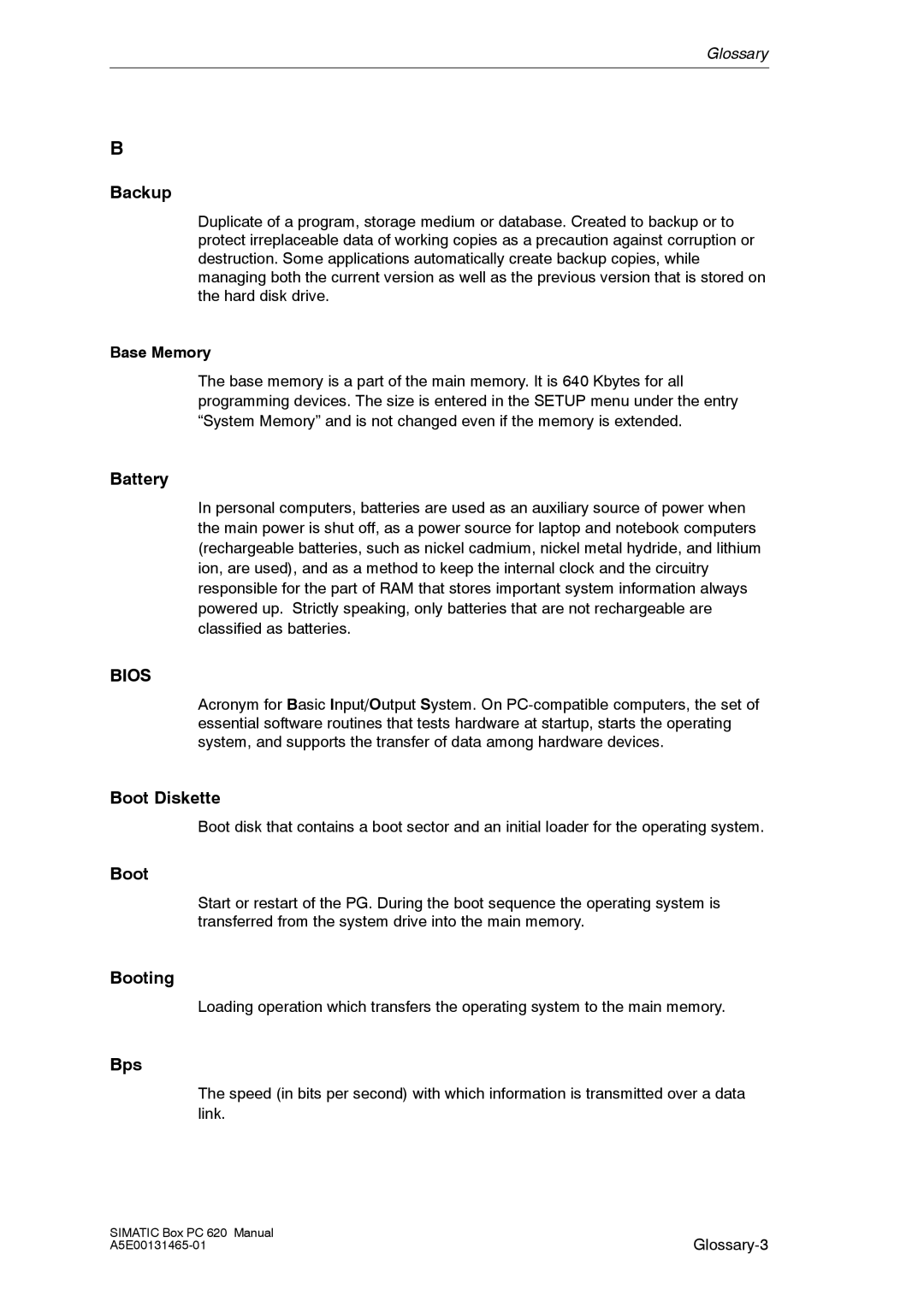Glossary
B
Backup
Duplicate of a program, storage medium or database. Created to backup or to protect irreplaceable data of working copies as a precaution against corruption or destruction. Some applications automatically create backup copies, while managing both the current version as well as the previous version that is stored on the hard disk drive.
Base Memory
The base memory is a part of the main memory. It is 640 Kbytes for all programming devices. The size is entered in the SETUP menu under the entry “System Memory” and is not changed even if the memory is extended.
Battery
In personal computers, batteries are used as an auxiliary source of power when the main power is shut off, as a power source for laptop and notebook computers (rechargeable batteries, such as nickel cadmium, nickel metal hydride, and lithium ion, are used), and as a method to keep the internal clock and the circuitry responsible for the part of RAM that stores important system information always powered up. Strictly speaking, only batteries that are not rechargeable are classified as batteries.
BIOS
Acronym for Basic Input/Output System. On
Boot Diskette
Boot disk that contains a boot sector and an initial loader for the operating system.
Boot
Start or restart of the PG. During the boot sequence the operating system is transferred from the system drive into the main memory.
Booting
Loading operation which transfers the operating system to the main memory.
Bps
The speed (in bits per second) with which information is transmitted over a data link.
SIMATIC Box PC 620 Manual | |
